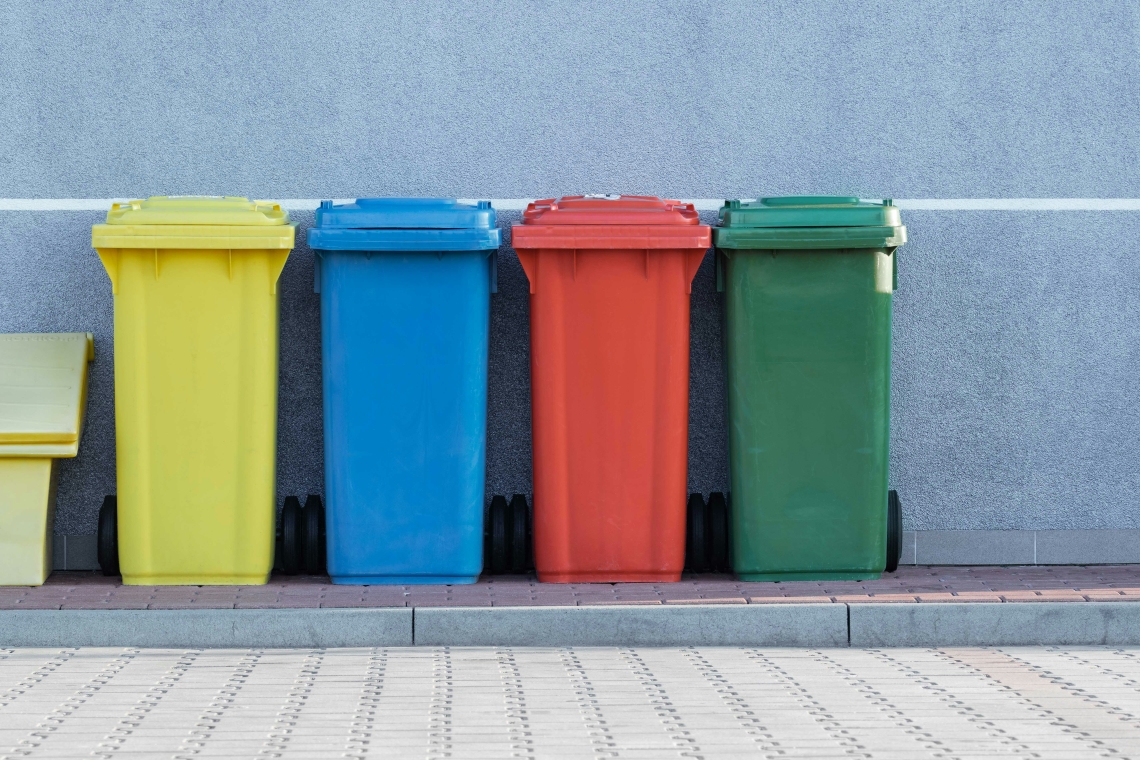
This year's theme of National Nutrition Month is Beyond the Table, which highlights all the steps in the food cycle and reflects on how they affect both human and planetary health. In this blog post, we are going to review the final step of the food cycle – waste management – and learn about what type of waste goes into each bin.
Different Types of Waste in the Food Cycle
There are three primary forms of waste associated with the food cycle: recycling, compost, and landfill.
- Recycling is the process of converting waste materials into new materials and objects.
Items put in recycling bins go to recycling facilities. There, items that can’t be recycled are diverted to the landfill. The bin color for recycling is usually blue and has a three-arrow triangle logo on it.
- Composting is the natural process of turning organic matter into a valuable fertilizer.
It is critical to strictly dispose of only compostable items here, to prevent contamination of the compost. Likewise, it is critical to avoid disposal of compostable items in the landfill, as organic matter anaerobic degradation in the landfill that produces methane – a powerful greenhouse gas. The bin color for composting is usually green with some form of food waste representing logo on it.
- Landfill is a system of garbage disposal in which the waste is buried underground or burned.
The bin color for landfill is usually black and has a trash-bin logo on it.
What to Recycle
Generally, this is where cardboard, paper, aluminum and certain plastics go. To be recycled, items must be clean and dry, otherwise they are diverted to the landfill. Recycling capabilities vary in regions, especially for plastics - you must find the information for the specific region in which you reside to ensure that you are putting items that can be recycled into the recycling bin.
What to Compost
Food parts that won’t be consumed should be composted. This includes non-edible food parts and scrapes of both plant and animal-based foods. Other compostable items include flowers, coffee grounds and paper filters, tea bags without staples, paper towels, napkins, and tissues. There are take-out containers and cups that are certified compostable – these have a compostable logo on them. However, not all regions are able to compost these items. You must find the information for the specific region in which you reside to ensure that you are putting correct items into the compost bin.
What to Put in Landfill
This is where non-recyclable and non-compostable items should go.
We can all play a role in going Beyond the Table to support the environment in managing our waste correctly. Take it step further, and see where you can make swaps in your life to reduce purchasing items that have to end up it the landfill by switching to reusable containers, and saying “no” to things that aren’t needed.
--------------------------------
Fernanda Nunes is a Bilingual Registered Dietitian based in our Oakland Grocery Center. Fernanda loves helping clients to learn about nutrition recommendations for their health conditions. In addition to her work as an RD, Fernanda leads the Sustainability Working Group at Project Open Hand.
